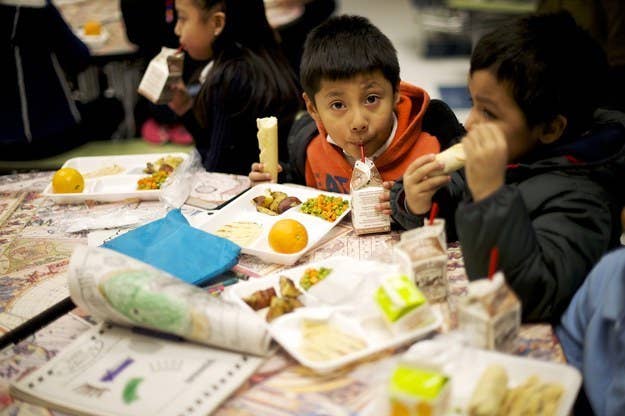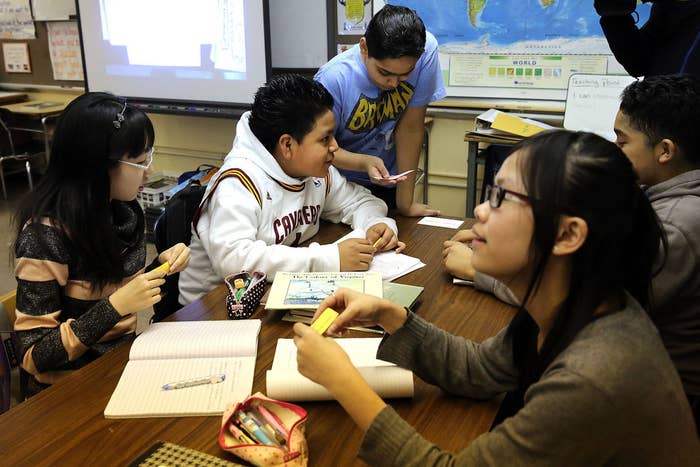
The number of minority students enrolled in U.S. public K-12 schools will likely surpass that of non-Hispanic whites for the first time this fall.
Projections by the National Center for Education Statistics show a new collective majority of mostly Latinos, Blacks, and Asians will make up 50.3% of the nation's public elementary and secondary school students, a demographics milestone driven primarily by rapid growth in the Latino population.
A steady rise in the number of Asian-Americans and students of two or more races has also contributed to the shift. Growth in the African-American population has slowed slightly in recent years, while the portion of Native Americans has remained more or less constant.
The enrollment tipping point is a harbinger of a broader trend in the make up of the American population; the U.S. Census bureau predicts white people will no longer be the majority by 2043.
It also presents an opportunity for the country if educators and policymakers can successfully address the challenges that come with change, Marcelo Suarez-Orozco, a global immigration expert and dean of UCLA's Graduate School of Education and Information Studies, told BuzzFeed.
Suarez-Orozco said a long history of diversity in some of the country's major metropolitan areas puts the U.S. in a unique and advantaged position among high-income countries, like Germany and the Netherlands, that are also experiencing a shake up in their composition as a result of immigration and low-fertility rates in the native population.

"Every high-income country in the world today is about to enter the same demographic transformation that we are now in the middle of," Suarez-Orozco said. "Our world is heading toward this amazing state of hyper-diversity, and in our country — in L.A., in New York, in Chicago, in Miami — we've been at this for longer… Immigration is both history and destiny," he said.
However, a shift in demographics does not come without challenges. More minority students can often mean more students living in poverty, more who will require English-language instruction, and more whose life experiences will be different from that of their teachers, who remain overwhelmingly white, Education Week reported.
Furthermore, a more diverse student population overall doesn't necessarily equate with more diverse schools. It is still uncommon for white students to attend schools where they are not the majority, the Education Week Research Center found.
It is also important to note that much of the recent growth in minority populations, particularly among Mexican and Central American immigrants, has happened in smaller cities and rural areas in the middle of the country and the South, with historically white majorities.
The Pew Research Center projects the Latino population will continue to grow at a steady clip, driven primarily by U.S. births as immigration from some countries in Latin American countries, especially Mexico, have slowed.
"The needs of Latinos who have been here for many generations are not the same as the needs of recent immigrants," Suarez-Orozco said.
Even so, he says the U.S. has to grapple with the fact that approximately 11 million people, many of whom are children in the public education system or are responsible for them, are living in the country illegally and are subject to family separation as a result of deportations.
"It's fundamental that teachers know and understand the communities, the cultures, and the backgrounds of the children they are engaging with — understanding the strengths, understanding the challenges," Suarez-Orozco said.
